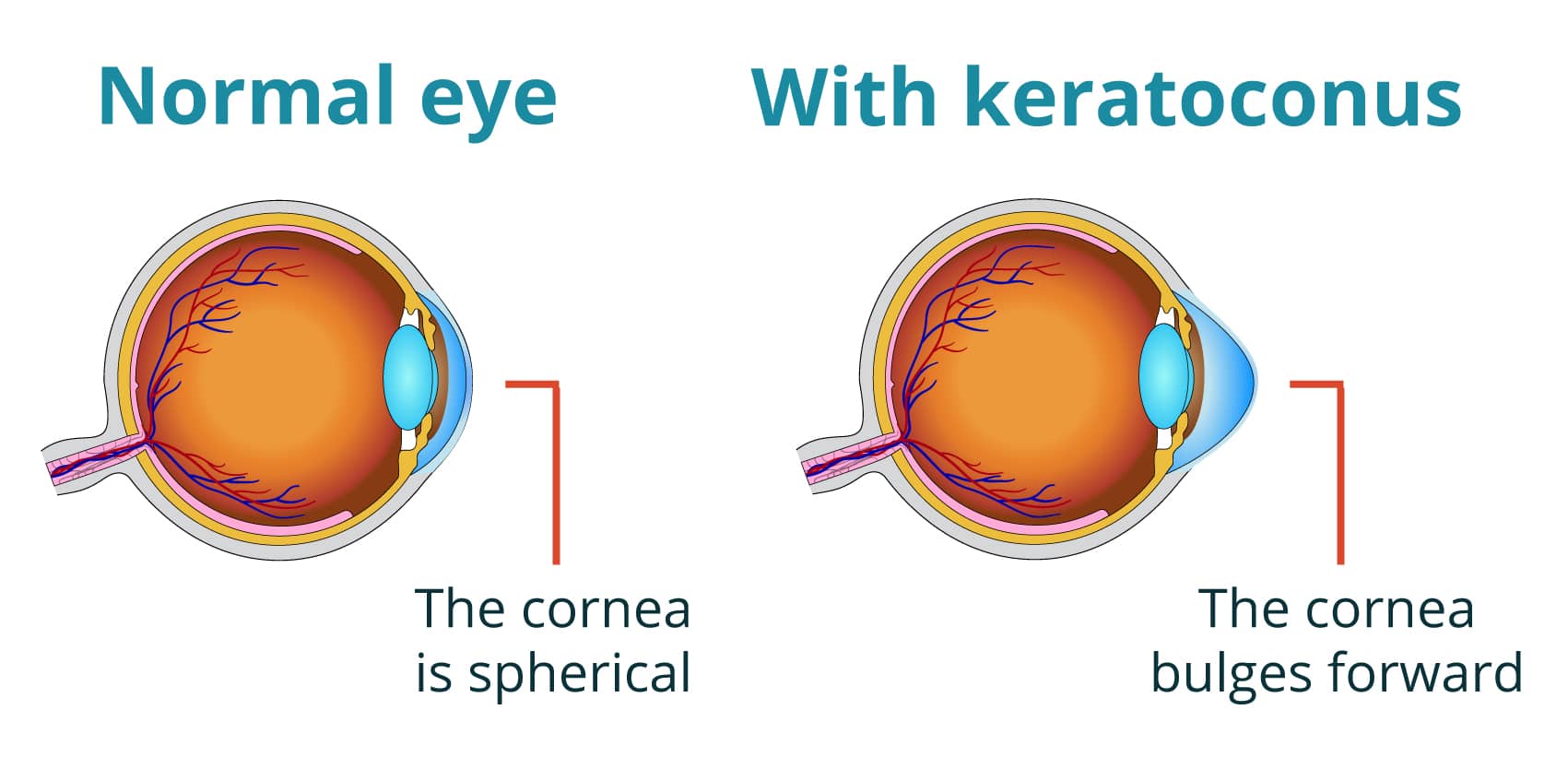About keratoconus
Keratoconus causes blurred vision, irregular astigmatism and in some cases, light sensitivity. This condition occurs due to the cornea having an irregular, conical shape.
While there is no cure for keratoconus, there are effective treatment options available. These include glasses, contact lenses (soft or rigid), corneal collagen crosslinking and corneal transplantation.
Keratoconus FAQS
Keratoconus advice
Get regular checkups
Because keratoconus is a progressive disease, it is important be monitored regularly by your optometrist. Have a checkup every 6-12 months.
Don’t rub your eyes
Rubbing itchy eyes can trigger keratoconus or make the condition worse. Instead, treat your itchy eyes with eye drops or anti-allergy medications. Progression of the condition can be slowed if you stop all eye-rubbing.
Getting the right lenses
Fitting customised contact lenses for keratoconus is a complex procedure, so you may need to trial several different lenses to find the one that’s right for you.
Avoid eye surgery
Eye surgery like corneal transplantation should only be considered when no other treatment options work.
Dr. Jim Kokkinakis can help you
Dr. Jim Kokkinakis’ commitment to excellence sets him apart. He is a keratoconus specialist and Senior Lecturer at the UNSW School of Optometry where he lectures on the subject. Jim is also a Fellow of the International Society of Contact Lens Specialists (ISCLS).
If you suffer from keratoconus, Dr. Kokkinakis is here to provide his expertise and knowledge. He can guide you through the various treatment options – from contact lenses to surgery – and recommend the most suitable solution for you.




